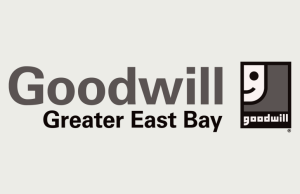Steven Nardizzi, president & CEO of the Wounded Warrior Project (WWP) in Jacksonville, Fla., doesn’t just try to encourage his employees to find fun in their work. He awards them. “If there’s a great work environment that’s fun and positive they’re going to be much better at achieving our mission,” he said.
WWP placed first in the second annual The NonProfit Times’ 50 Best Nonprofits To Work For within the medium organizations category and first overall in the study.
The NonProfit Times again worked with the Best Companies Group in Harrisburg, Pa., to seek out the best nonprofit for which to work. Email messages were sent to approximately 100,000 employees at nonprofits seeking nominations. The organizations applied and went through several levels of screening conducted by Best.
Both management and staff completed surveys. Additional information was sought from outside the organization, from businesses that work with the organizations.
To be eligible for consideration, nonprofits had to meet the following criteria:
* Must be in operation a minimum of one year;
* Must be a nonprofit organization with 501(c)(3) status;
* Have a facility in the United States; and,
* Have a minimum of 15 employees in the United States
There were a few exceptions. Management support organizations and consultancies formed under a tax-exempt umbrella could not compete for inclusion. Due to the large number of smaller organizations in the nonprofit sector, a “small-sized nonprofit” category was established to give nonprofits in this category a chance to compete. To ensure the credibility of the information, nonprofits in this category must have an 80 percent (or better) response rate from their employees filling out the survey.
Best conducted a simple yet thorough organizational assessment. The assessment is a two-part process designed to gather detailed data about each participating nonprofit. In part one, the employer completes a questionnaire and in part two, employees complete a confidential survey. The collected information from the two instruments is combined to produce a detailed set of data enabling the analysts to determine the strengths and opportunities of the participating nonprofits. The workplaces are ranked based on this data and then the Employer Benchmark Summary is returned to each participating organization.
The employer questionnaire is where important information is captured about nonprofit policies, practices and demographics. This portion of the assessment was sent out shortly after the registration deadline and was due before the employee surveys were sent.
The employer questionnaire was sent to the primary contact electronically. It was completed and submitted online to aid in the functionality and ease of the surveying process.
The Employee Engagement and Satisfaction Survey consisted of approximately 72 statements that employees responded to on a five-point agreement scale. The survey also includes two open-ended questions and seven demographic questions.
The results were analyzed and categorized according to eight core focus areas: Leadership and Planning, Corporate Culture and Communications, Role Satisfaction, Work Environment, Relationship with Supervisor, Training and Development, Pay and Benefits and Overall Engagement.
The majority of the employee surveys were handled online. However, paper based surveys were available to those nonprofits whose employees do not have online capabilities. For the online version, each employee received a unique Web-link via email. Nonprofits choosing the online version of the survey were be asked to submit a list of employee email addresses via an upload portal. Best performed the random selection for online nonprofits having more than 250 employees. Best surveyed up to 400 randomly-selected employees depending on employee size.












